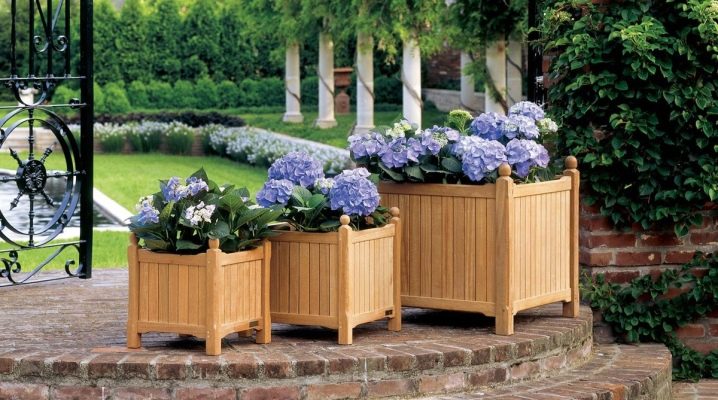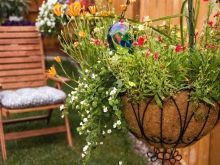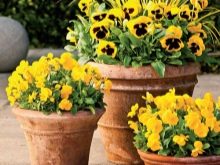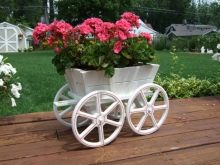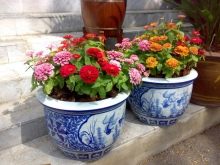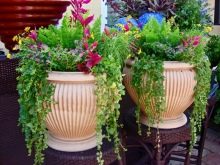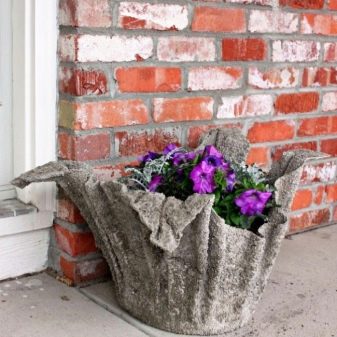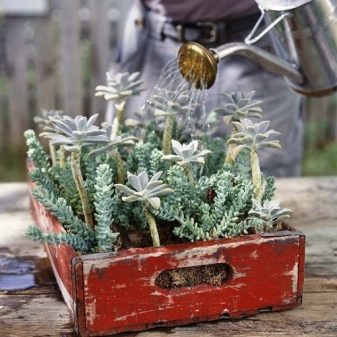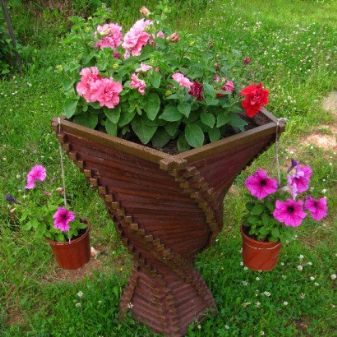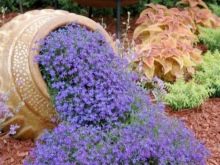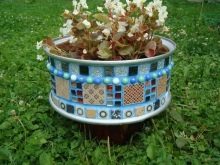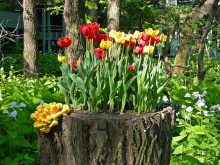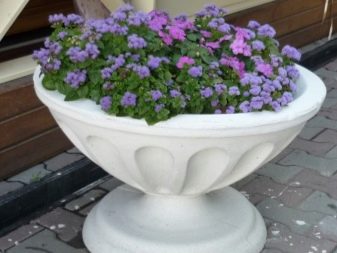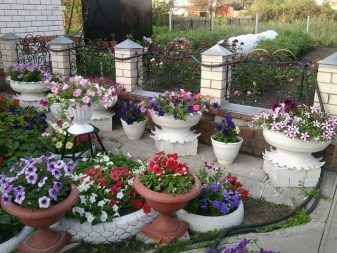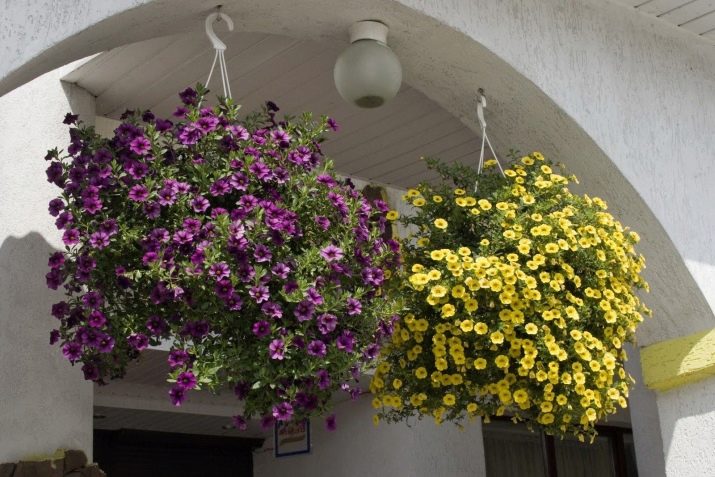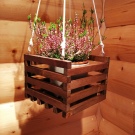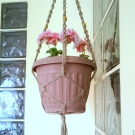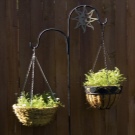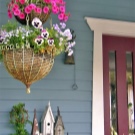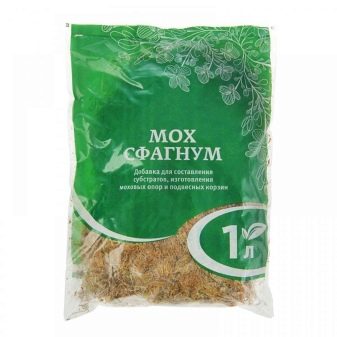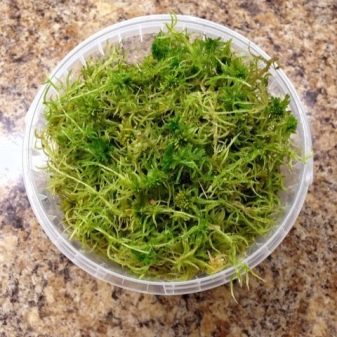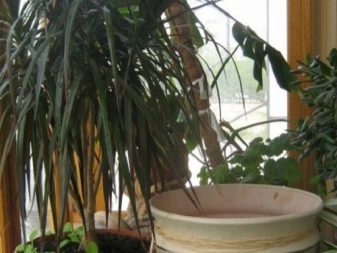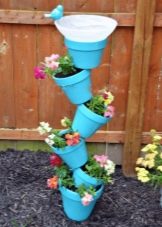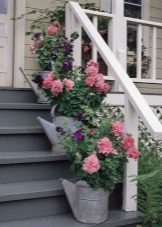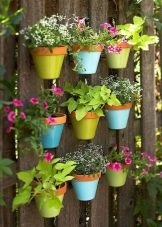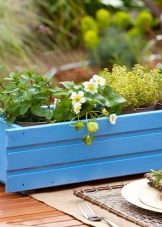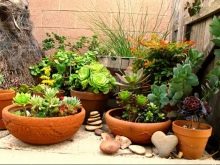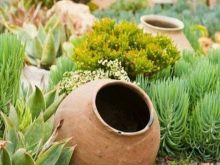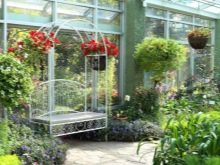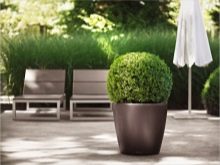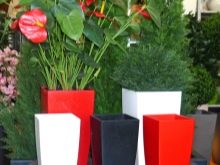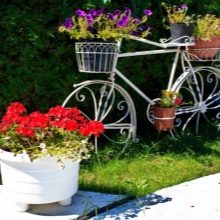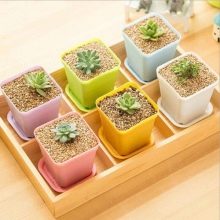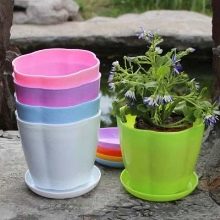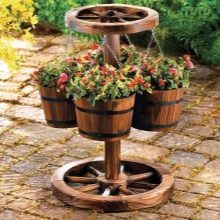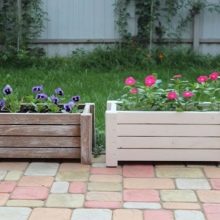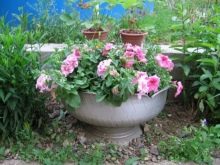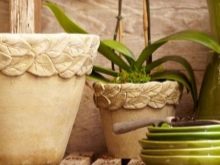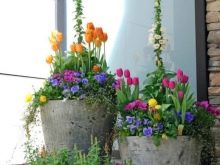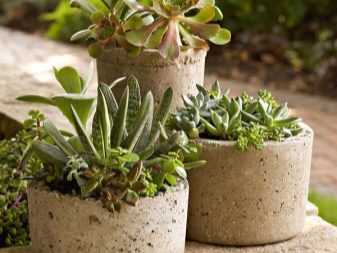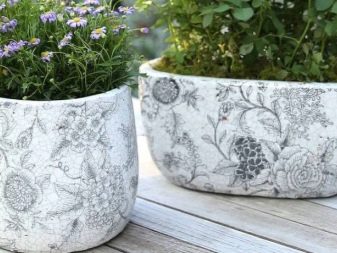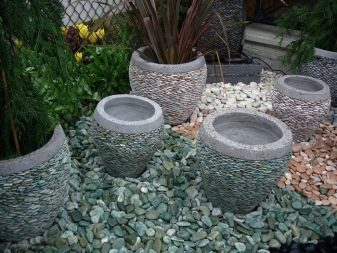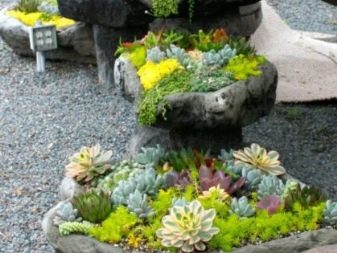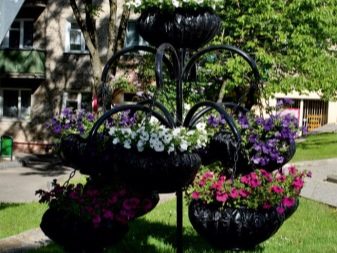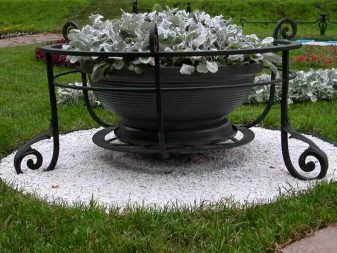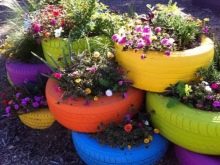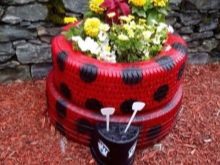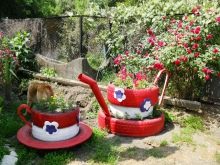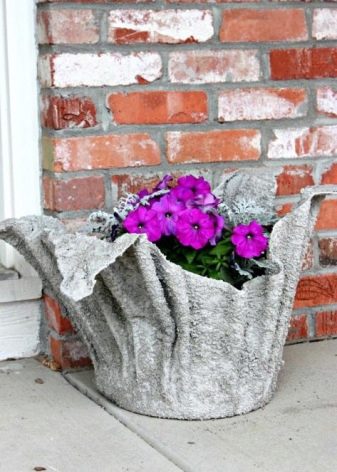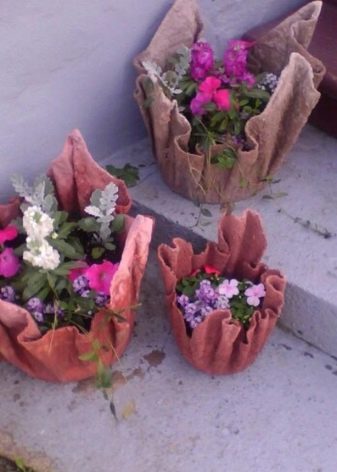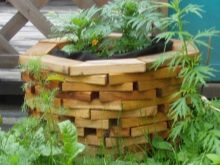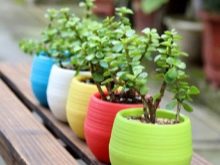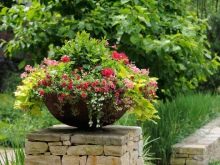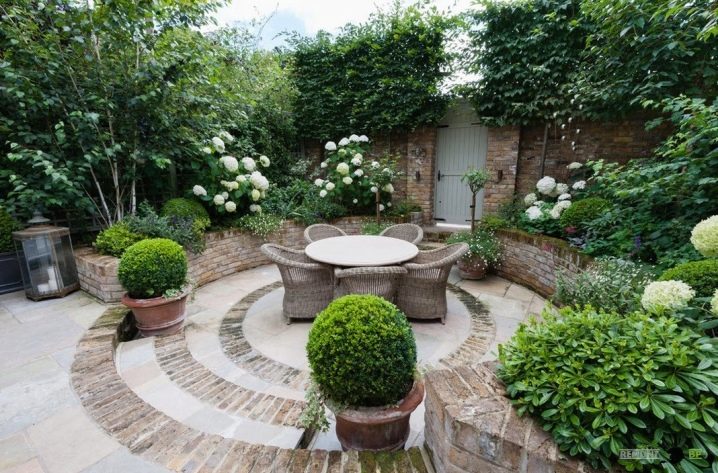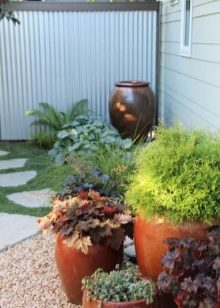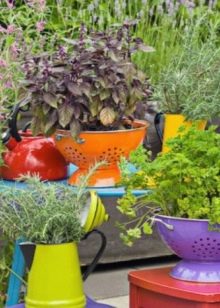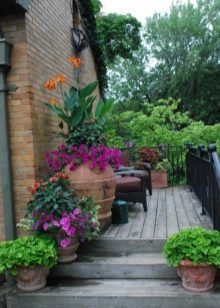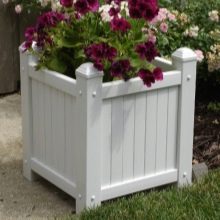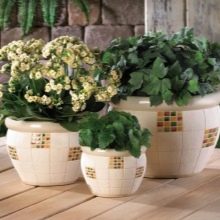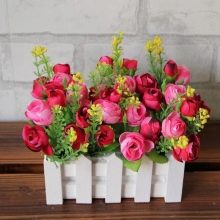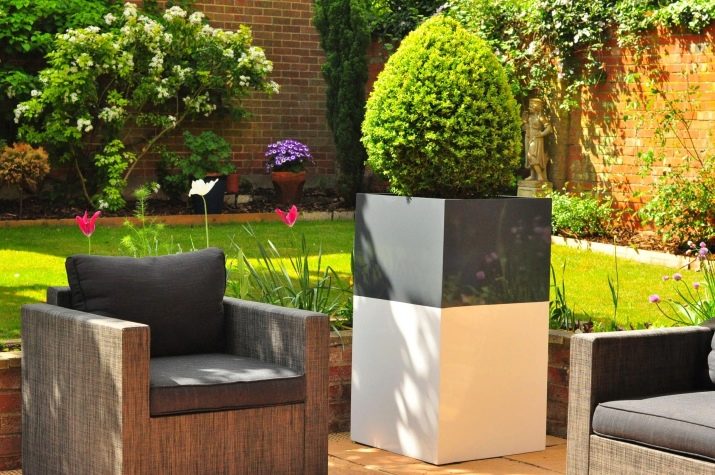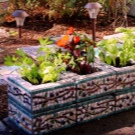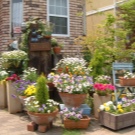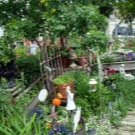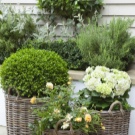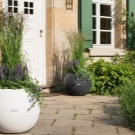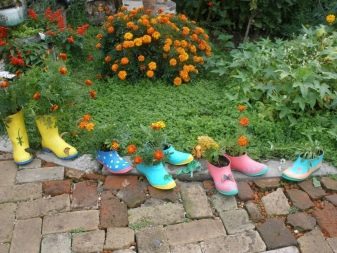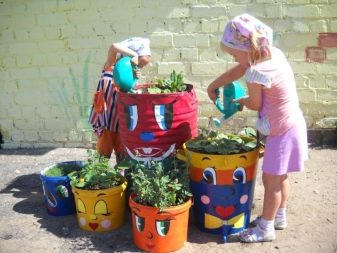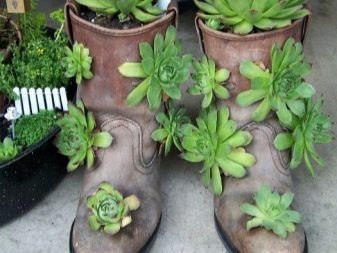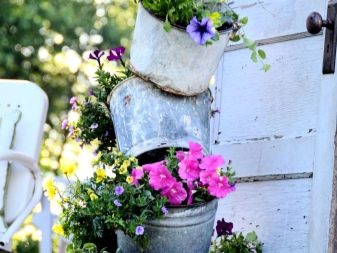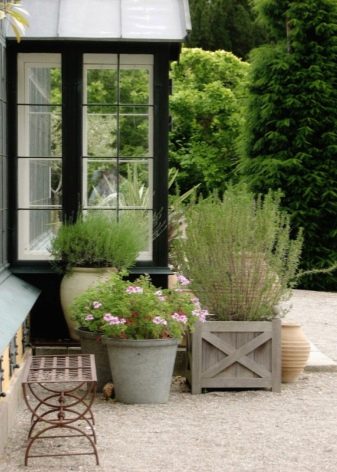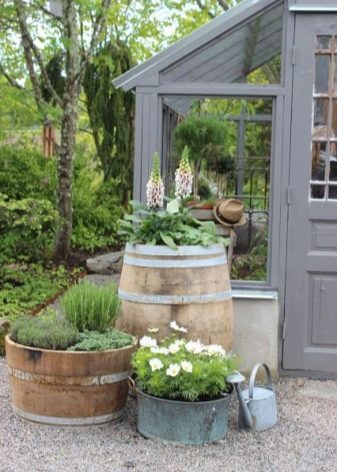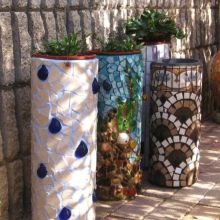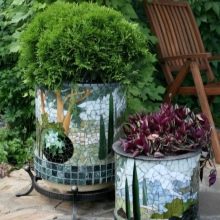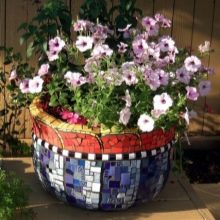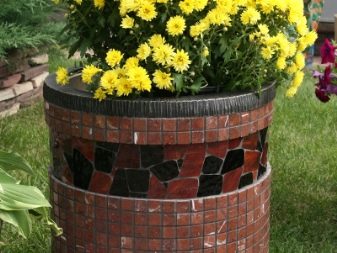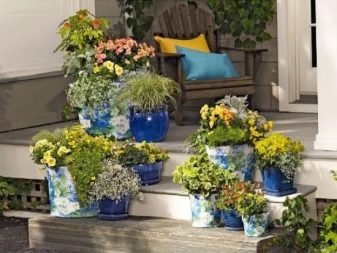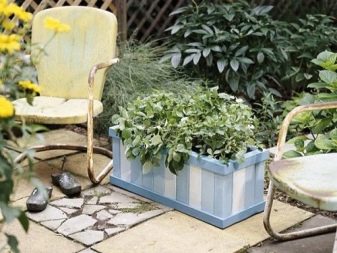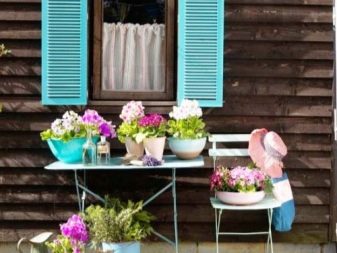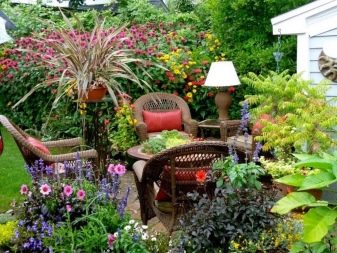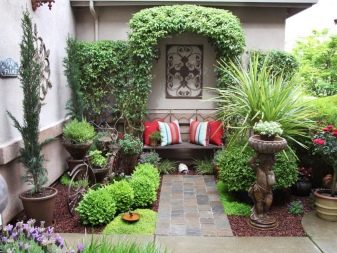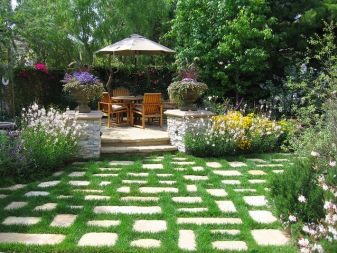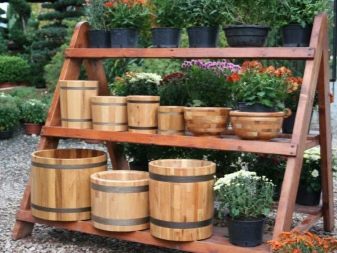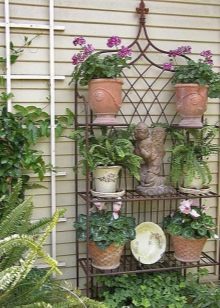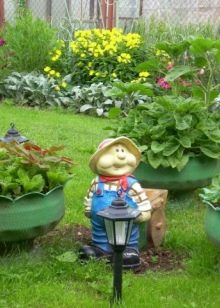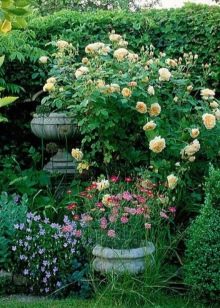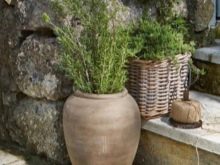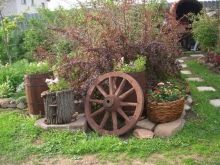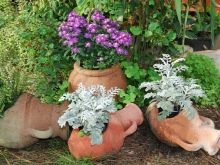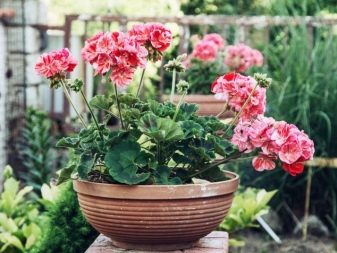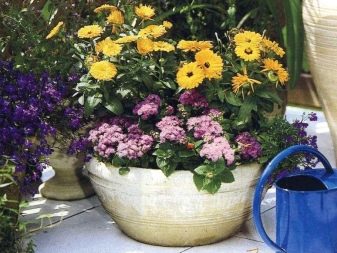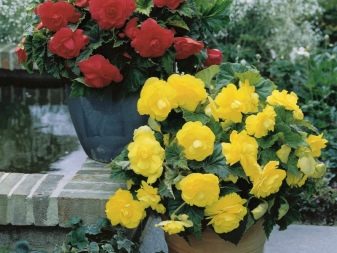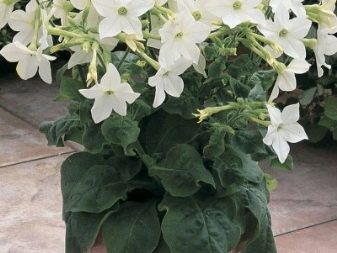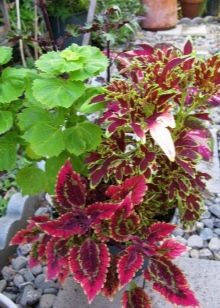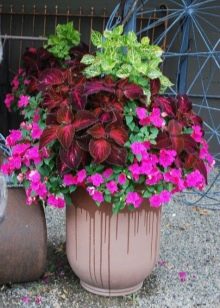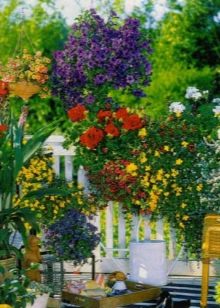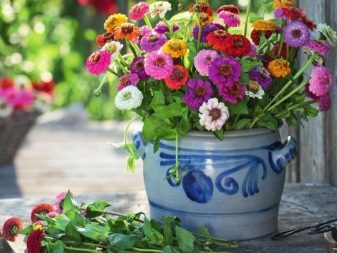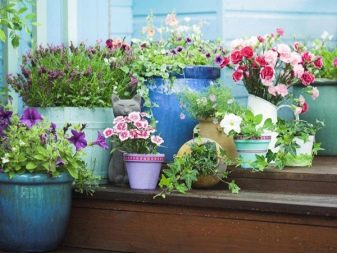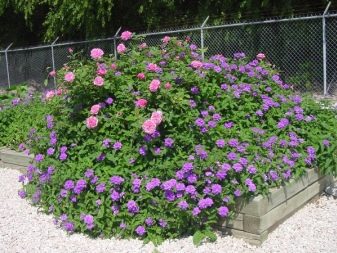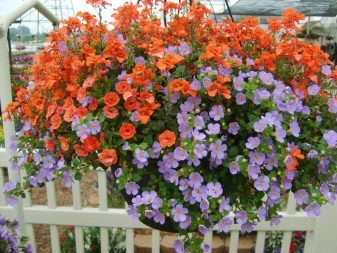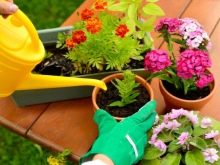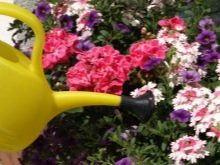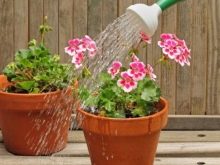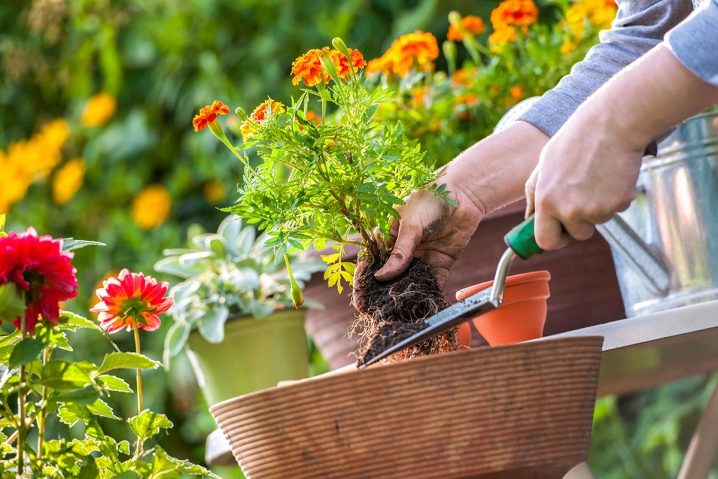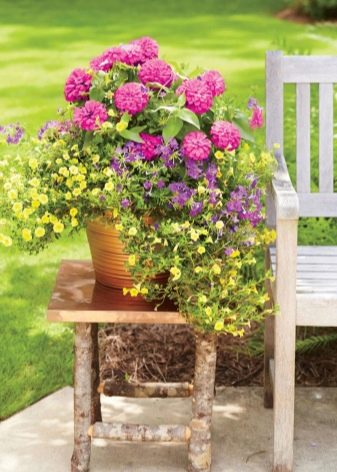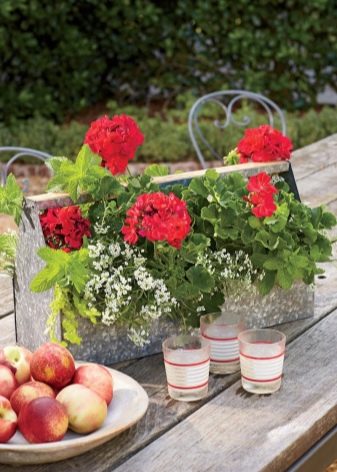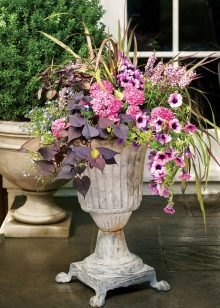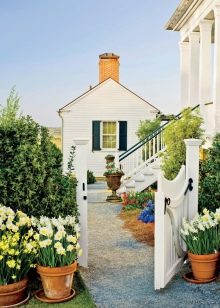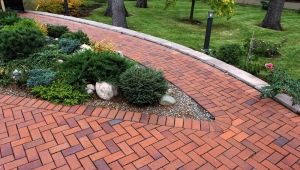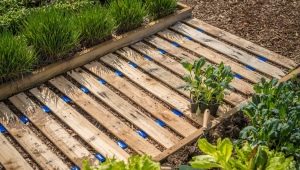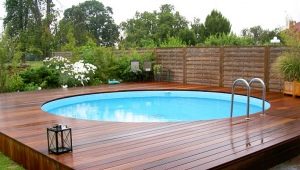We decorate the cottage with the help of flowerpots
Outdoor flowerpots for flowers - a great way to give a stylish look to the courtyard or create a place to relax in the garden. Pots, tubs, and flowerpots filled with flowers immediately attract any eye and hide unsightly areas of the garden. The recent tendency to use flowerpots is their placement at the entrance to the house, which gives the house an antique shade and serves as a kind of greeting gesture for guests.
What it is?
The word "pot" refers to a container for growing ornamental plants. Container gardening is great for novice gardeners, for people who have too little space to accommodate flower beds and flower beds, or for those who want to decorate a porch or patio. Only one plant or a whole combination of plants can be planted in a pot, depending on what purpose you are facing.
You can grow plants like thiswhich are not suitable for your garden in terms of soil conditions or place next to each other pots with plants with different soil requirements.
Popular plants for containers - flowers, herbs, vegetables, various succulents, small shrubs. Growing plants in flowerpots is available to everyone, including children, people with reduced mobility and the elderly, as there is no need for weeding and the use of heavy tools.
If you want to update the look of the site, the pots can be easily moved according to your new needs. The color scheme of plants grown in the pot, you can also change, replacing plants after flowering or fruiting.
Kinds
Garden decorative flowerpots can have a wide variety of forms and, in accordance with their forms, can be used differently for the design of a site. Outdoor flower vases can be either of the floor type or on the leg (pedestal). In some cases, the pot and pedestal are two separate parts.
Pedestal vases can add some really interesting elements to the design of the garden.For example, they are great for displaying plants such as ivy and ferns, which are usually in the background and can get lost among flowering plants and shrubs. As a rule, the design of pedestal flowerpots corresponds to the classical traditions (for example, the Greek urn), often they are made of artificial stone.
A very effective way to use such flowerpots is to group three flowerpots of different height, and then plant suitable plants in them, for example, three types of fern.
Suspended pots are used for vertical gardening. There are many types of hanging pots, for example, in the form of wicker baskets. In this case, the size is very important. Plants planted in too small pots will require more frequent watering and pruning. The larger the pots, the better, because a large container holds water better, which means less work and more opportunity to plant larger, brighter plants.
When growing plants in pots usually use liners. The purpose of the liner is moisture retention in the soil.
The most common material for this is sphagnum moss, it perfectly retains water due to its thick, fluffy texture and the presence of dry and empty cells in the stems. There are coconut liners, which are usually sold in preformed form under pots of various sizes. The disadvantage is their considerable thickness, which complicates the placement of plants along the edges of pots. There are also liners made of synthetic materials.
The traditional container for plants is a clay pot. It is quite strong and stable, quite decorative and meets the growth conditions of most plants. The walls of the earthen pot are porous, so excess moisture can evaporate through them. In the same way, toxic salts can disappear.
If you have plants that require high humidity, a plastic pot would be more suitable. In this case, you must be sure that you will not overflow the plant, since excess water will not be able to evaporate through the plastic walls.
If there is not enough space in your garden to grow vegetables or not suitable soil for this,a container garden would be an excellent option. For this purpose, suitable pots, wooden or plastic boxes, and even old kettles, jugs and cans. It will be necessary to drill holes in the bottom for drainage.
In the cold winter months, when the gray sky contributes to a dark mood, a colorful winter garden can improve it. To do this, choose a large enough pots (diameter about 45 cm), so that they can accommodate 9-10 plants. Since plants grow in winter very slowly, plant adult specimens and place them closer to each other than during summer planting. The material of the pot should be durable and resistant to frost: fiberglass, ceramic or stone.
Material
Depending on the requirements for the appearance and strength of the pot, materials can be used very different: asbestos, cement, clay, metal, plastics, glass fiber and wood.
The cheapest are plastic pots. They tend to have more drainage holes than terracotta, ceramic or concrete. If necessary, they are easy to drill additional holes.Plastic pots are made in all shapes, colors and sizes and retain moisture well. However, plastics are petroleum products, therefore Try to avoid PVC pots and polycarbonate pots, as they can produce harmful chemicals over time.
The safest pots are made of polypropylene. Also avoid using scratched or worn plastic pots, as this can also lead to leaching of chemicals.
Plastic pots can be used for only a few seasons, as they become fragile when exposed to sunlight.
Wooden containers, as a rule, are well combined with other garden design items, such as benches or grids, well protect the roots of plants from overheating and are relatively durable. Usually it is a good choice for large container gardening projects and for those who like to decorate the garden with their own hands, because they are easy to paint or paint to your liking.
However, they require annual preservative treatment with a non-toxic paint or waterproofing agent. Untreated wooden containers lose their attractiveness and eventually rot. In addition, since wood is a natural material, pests can settle in them.
Terracotta, clay and cement (concrete) vases usually have only one drain hole in the base. For most plants this is not enough. You will have to drill additional holes without damaging the pot. The great advantage of terracotta and clay vases is that they are made from natural porous materials that allow the roots of plants to breathe. At the same time, moisture easily leaves the pores, as a result, the ground in the pot quickly dries out and the plants have to be watered more often.
All these materials retain heat for a long time, which, if left in the sun for a long time, can lead to overheating of the earth, at the same time, plant roots and beneficial microorganisms may die.
Concrete pots often have large sizes, so they are suitable for large shrubs and trees. Concrete is a good insulator, so it is suitable for a climate with drastic changes in the weather, as it protects the soil from temperature changes.However, concrete contains a lot of lime, which is toxic to many plant species.
Rinse the concrete container thoroughly before use to dissolve the excess lime and allow the water to drain several times.
Stone vases - durable and resistant. Made of natural stone, they look attractive and very decorative, but, as a rule, are very expensive and heavy. Artificial stone containers are lighter, cheaper and available in different sizes and styles. Many stone vases are made of a mixture of limestone and lightweight fiberglass, so they have good strength and water resistance and at the same time, quite light.
Metal vases are very decorative, but in the open sun they overheat. To avoid this, put a clay or plastic pot inside as a liner.. In container gardening, not solid metal flowerpots are often used, but forged decorative frames in which coconut or synthetic liners are placed.
Old car tires became popular containers for gardening in the country.It is convenient to use them, since tires can be moved from place to place, painted or hung up, there is no need for digging the ground. For plants that need warm soil, the tire is an ideal container. Black rubber heats up well, especially in direct sunlight. but Try to avoid using tires for several seasons, as rubber can release harmful substances during aging.
Currently, new efficient types of containers have appeared, for example, from breathable fabric. They have many advantages. In standard plastic pots, the roots, reaching the impenetrable walls of the pot, begin to grow downwards. Reaching the bottom of the pot, they are intertwined with each other, which leads to slower growth of the plant as a whole. In a fabric pot, roots can sprout through permeable walls in all directions.
However, some roots that have sprouted through the fabric die off as a result of exposure to light and air, then the plant begins to generate new roots.
An increase in root mass provides better absorption of water and nutrients, which allows the plant to grow faster.
Dimensions
The size of containers plays an important role in how well plants grow and develop. In general, a large pot is preferable because the roots of plants should have enough space for good growth and, in addition, a large container allows the soil to retain moisture better.
However, a large pot is not always better than a small pot. If you plant a young plant with a small root system in a large pot, the balance of moisture in the soil may be disturbed.
The width (or diameter) of the pot also matters. For example, a tall and narrow pot is not suitable for placing several varieties of plants, for this it is better to take a wide and low pot. The most frequently used in floriculture is a capacity of 3–3.5 l with a diameter of about 15 cm and a height of 18–20 cm. A pot with a volume of 7–7.5 l is suitable for growing plants with a height of about 60 cm, for example, low shrubs. In a pot of 20 liters, you can grow plants with a height of 1-1.5 m.
Colors
Colorful flowerpots in shades of blue, red, orange, or even purple are in many cases preferable to dark-colored containers that blend in with the soil.For example, shady areas of a garden often look inexpressive due to the fact that most flowering plants prefer to grow in the sun. This problem can be solved by placing in the shady area a colorful container filled with shade-loving plants, for example, hosts.
White pots reflect solar radiation, which helps protect plant roots from overheating. If necessary, they can easily be painted in any color. White color looks festive on any part of the garden and is an excellent background for most plants.
The form
Thanks to the combination of functionality and versatility, the most common is the traditional rectangular pot. It is ideal for small courtyards, patios or irregularly shaped areas where the use of bulky round containers is limited. Rectangular pots can be placed in a line along the track or along the boundaries of the site. They can also be organized in such a way as to divide a large open space into smaller areas or to separate recreation areas from the rest of the territory.
Round vases are more suitable for creating color accents in the form of garden beds.With the help of small round containers, you can also create floral vignettes in different parts of the garden.
The trend of modern container gardening - flowerpots of unusual shape.
Flowers can grow in old kettles, baskets, boots and hats. There are also flowerpots in the form of charming animals - an elephant, a fox or a snail. In such vases, flowers playfully look out from the backs or heads of animals. Plants in such containers give the garden an original look.
Style and design
The style and design of the pot should be in harmony with its surroundings. If you plan to use flowerpots in the garden among other plants, it is better to use natural material, such as wood. This shifts the visual focus from the pot to the plant itself. On the porch of the house in the cottage style looks good wicker basket of flowers. The tall, stately urn looks good at the entrance to the official garden.
Mosaics are a stylish addition to any garden.
Mosaic art dates back to Greek and Roman times, when it was used to decorate temples and palaces. Currently we can use mosaic patterns to decorate our homes and sites.You can recreate the character of ancient mosaics by decorating an ordinary terracotta pot. Use stones, glass beads, pieces of broken cups.
When decorating a garden in a maritime style, the task is to create an image of the coast. For this fit decorative containers in the shape of a wave or unusual sea creatures. Place the containers against a blue-white tile. Plant in them decorative blue and green grasses (for example, a sandy spike) that will swing in the wind, creating the impression of sea waves.
Which is better to choose?
If you have very little free space, choose a brightly colored and eye-catching pot. Plant in it a plant with foliage in a contrasting color. If you want to make an architectural accent, choose a large container with an interesting shape and place it against a background of contrasting surroundings (for example, a tall, narrow container, located next to a lush, rounded plant).
Do not purchase many small pots of the same size. It is better to take those that are made in the same style, but in different sizes.
Set large pots with tall plants in the background, and smaller ones with low flowers in front of them. Your composition will look harmonious.
What flowers fit?
In the container you can plant almost any flowers, shrubs or small trees. The most suitable are dwarf varieties or with a compact form of growth. If you plant a fast-growing plant in a container, it will soon require a transplant.
Please note that most perennials will not grow in a container to the same size as in the soil. For example, a plant that grows in a garden to a height of 3 m in a container will only reach half of this value. Therefore, if you want your container to look good, plant already mature plants in it.
Plants that you will grow in vases should be combined with each other for agrotechnical conditions. Shade plants should not grow in the same container with the sun. Pay attention to what kind of soil the plants need: sandy or humus-rich, acidic or alkaline, dry or wet. Combine only those plants that need similar conditions. Plants with different requirements for growing conditions are planted in different pots.
It is not necessary to plant many flowers in each container. For better design, add one or two elements to the composition with one single plant.For example, a single bush of a mature host looks impressive, especially when surrounded by pots with other plants.
When choosing plant material, first of all pay attention to the color and texture of foliage, and only then during flowering, the shape and size of flowers. If you work with perennials, then we must remember that they bloom only for a limited time, unlike annuals that bloom all summer.
Tips and tricks
To create containers that remain attractive all summer, look at annuals. Geraniums, calendula, wax begonias, Coleus (Solenostemon scutellarioides), salvia (Salvia splendens), and fragrant tobacco are a good choice. Dwarf conifers, small shrubs, ornamental grasses are great for gardening in containers.
Compositions with decorative foliage retain the longest appeal. Plant Coleus Rustic Orange in the center, and its orange leaves will burn to frost. Plant impatiens SunPatiens (Impatiens sp.) At the edges of the pot; its small flowers are also orange and contrast nicely with dark shiny leaves. Finally, the amorphous yellow Moon (Torenia sp.) Will add to the composition lush green and charming small yellow flowers with purple tongues.
All these plants are moisture-loving, so the container will need to be watered often. You can place it in the sun or in partial shade.
For planting near the house, bright pink and yellow zinnias, which look great in traditional round-shaped flowerpots, work well.
To create a contrast in texture and color, add “fillings” of cool shades, for example, purple vervains and blue calibers. Group the pots at the porch, and you will get a wonderful mini-garden at the entrance. In addition, when placing such containers near the intensity of color perception increases.
When watering, make sure that the water is completely saturated with the container. How often watering depends on many factors: weather, plant size and container, location (in the sun or in the shade). Do not allow the soil in containers to completely dry out, as it will be difficult to soak again. To preserve moisture, apply a layer of mulch on the soil surface at a distance of 2-3 cm from the stalks of the plants.
Container garden plants need regular feeding. This can be done by watering them with diluted liquid fertilizer, seaweed extract or foliar feeding with the same preparations. Start by feeding once every 2 weeks, then adjust the frequency depending on the response of the plants.
To make your flowerpots look best and be the “focal points” of the garden, remove all yellowed leaves and flowering inflorescences from the plants.
If some plant becomes too “long-legged” and will break out of the total mass, remove it too. Keep pests away from the garden, such as aphids and mites.
Beautiful examples and options
Designers offer the following options:
- A flowerpot can turn an ordinary backyard bench into a great place to relax outside. The copper color of the flowerpot is in harmony with the pink zinnias, the yellow caliber and the purple verbena create a pleasant contrast with them.
- Unusual container for giving can be made from a metal box for tools. The main charm of this composition is the contrast between the metallic luster of the container and the soft, delicate flowers of the plants. Garden mint, red geranium and white alissum are used in the composition.
- Flowerpot, decorated in a romantic style. All plants are selected in shades of pink: Cordilina, garden carnation, angelonia.Contrast creates dark foliage and pale blue lobelia. The shape of the pot also brings an element of romance.
- The romantic container creates an exciting sense of magic and mystery thanks to its bright colors and sense of movement. To achieve these effects, you must select the correct ratio of colors and greens. In the hanging pots with a moss liner, plant pink carnations and petunias, and on the sides arrange variegated ivy and tiny leaves of saltirolia.
- You can move these containers wherever you want, be it an entrance door, a porch, steps or an inner courtyard. Once the bulbs have finished flowering, transplant them into the garden. The composition used classic pots of terracotta, but daffodils look fantastic in any container, so choose what is best for your garden.
From the video below you will learn how to properly care for perennial garden plants.
